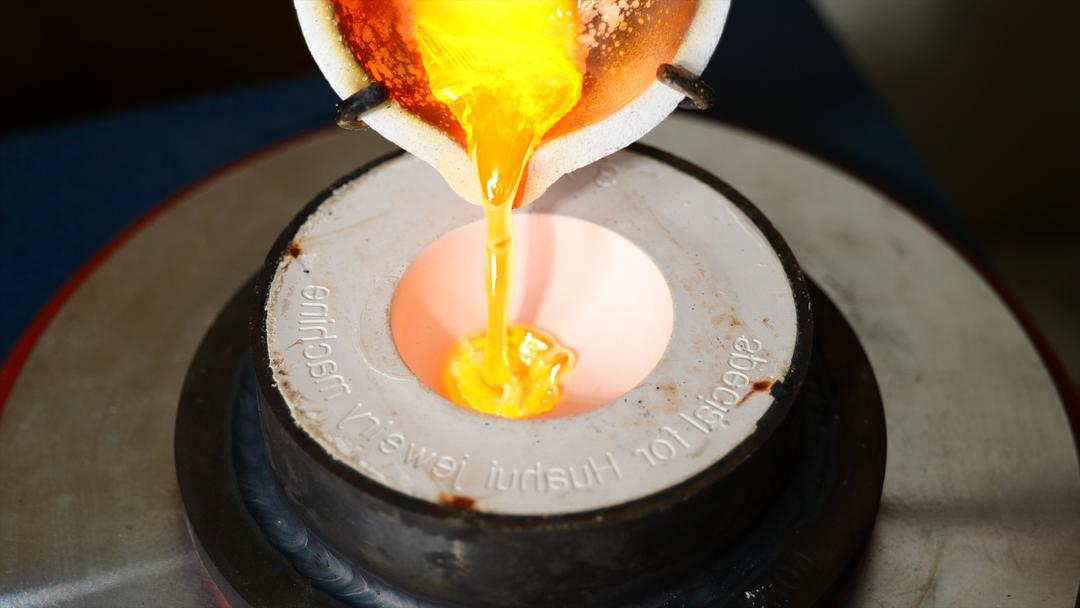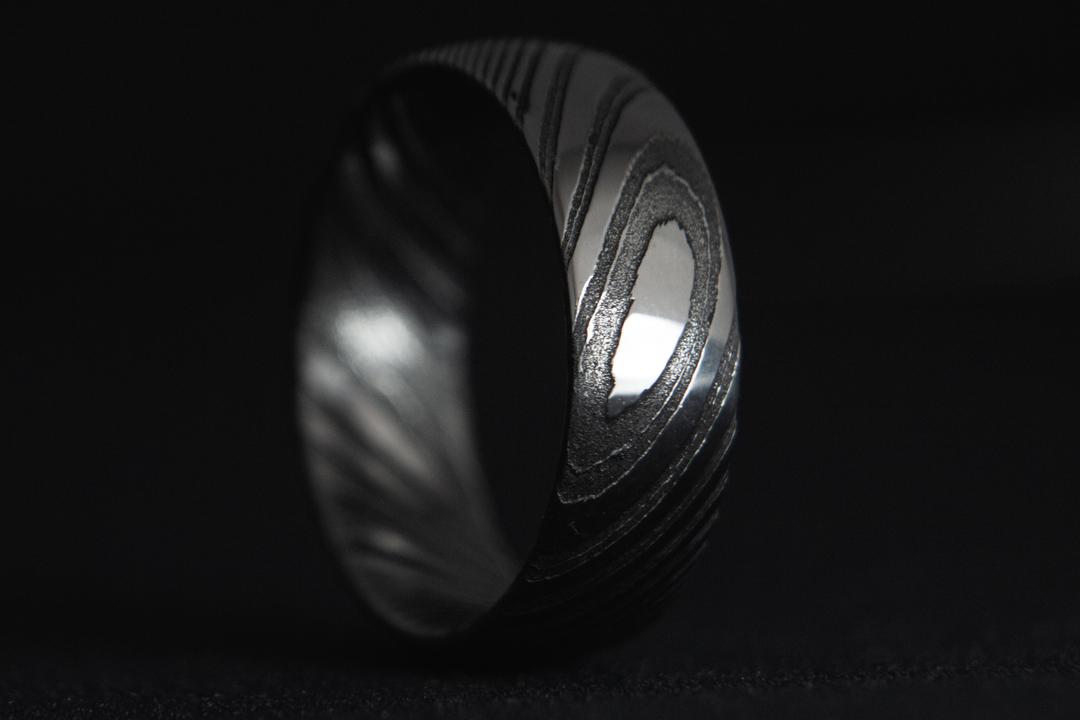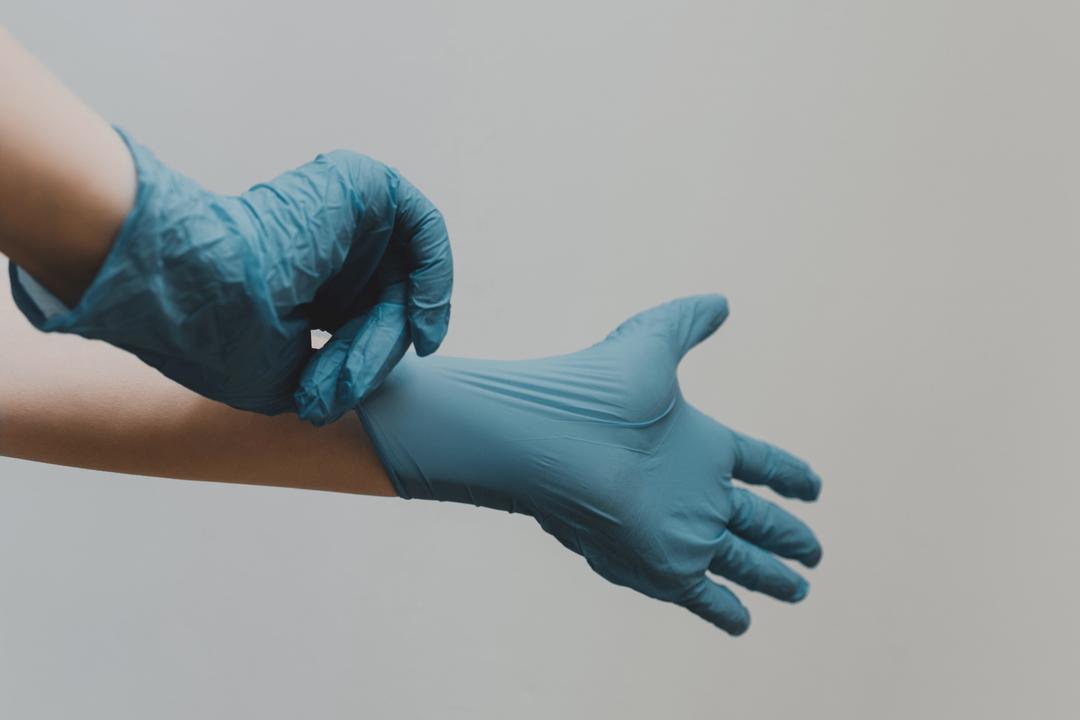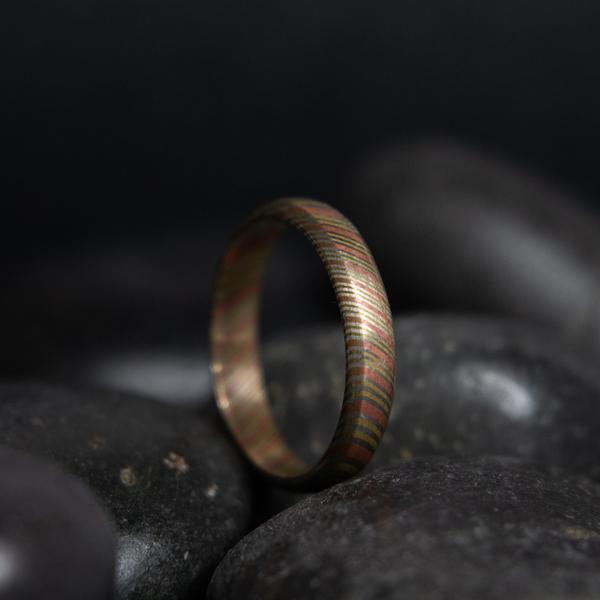Mokume Gane Jewelry
Mokume Gane Jewelry
Countless forms of metalworking techniques have been created throughout history for various intents and purposes. While some had ultimately become fundamental techniques in the industry, many others had unfortunately died out for a number of reasons. There are, of course, rare occasions when a dying practice is brought to light once again, much like what happened to the mokume gane jewelry technique. Not many know of its existence, but those who do can vouch for its undeniable craftsmanship.
Initially created in the early 1700s by the master metalworker Shoami Denbai, the mokume gane technique had lost its fervor up until the 1970s when Hiroko Sato Pijanowski brought the craft to the United States. Teaching her students the dying practice, the technique caught on and has since then been gaining popularity most especially in the jewelry market, now being produced as mokume gane wedding bands and other types of accessories.
What Metals Are Used in Mokume Gane Jewelry?
Mokume Gane was a technique that was commonly used to adorn samurai swords and knives. Metalworkers traditionally preferred to use copper alloys as it performs well and is best suited for large scale projects. Not to mention that the brownish color of copper made their efforts look more like wood grains.
For more intricate projects like jewelry, precious metals like sterling silver, yellow gold, white gold and brass are frequently used alongside copper, as they are malleable while still remaining durable. Silver and gold alloys when contrasted with other non-ferrous metals come out beautifully especially in jewelry and wedding rings, and are fairly easy to work with.
Patrick Adair Designs uses a non-ferrous Mokume Gane alloy that is a blend of cpoper, nickel-silver, and brass.
How to Make Mokume Gane
While the fundamental ideas of making mokume gane have not changed, the advancement of technology certainly has given metalworkers and jewelers alike an easier time to create a material that requires a lot of precision. Modern technology matched with age-old techniques are a full proof combination that ensures functionality and allure.
Making mokume gane is already quite a task in itself. It involves alternately stacking contrasting metals that have been thoroughly cleaned, then compressing and heating them at a high temperature. The heat fuses all layers into one solid block of metal known as the billet, which can be made into sheet metal with a variety of patterns by repeatedly carving, twisting, and forging through the layers and reducing its thickness. This creates a durable material fitting for adornment or for jewelry with a unique pattern akin to that of wood grains.
While the fundamental ideas of making mokume gane have not changed, the advancement of technology certainly has given metalworkers and jewelers alike an easier time to create a material that requires a lot of precision. Modern technology matched with age-old techniques are a full proof combination that ensures functionality and allure.
Making mokume gane is already quite a task in itself. It involves alternately stacking contrasting metals that have been thoroughly cleaned, then compressing and heating them at a high temperature. The heat fuses all layers into one solid block of metal known as the billet, which can be made into sheet metal with a variety of patterns by repeatedly carving, twisting, and forging through the layers and reducing its thickness. This creates a durable material fitting for adornment or for jewelry with a unique pattern akin to that of wood grains.
What is the Difference Between Mokume Gane and Damascus?
Both mokume gane and damascus steel are made with contrasting metals welded together with high heat and pressure, so its no surprise that the two are often thought to be the same thing. Although mokume gane and damascus steel do share a lot of similarities, their differences lie in the composition of metals used in their creation.
Both mokume gane and damascus steel are made with contrasting metals welded together with high heat and pressure, so its no surprise that the two are often thought to be the same thing. Although mokume gane and damascus steel do share a lot of similarities, their differences lie in the composition of metals used in their creation.
Both mokume gane and damascus steel are made with contrasting metals welded together with high heat and pressure, so its no surprise that the two are often thought to be the same thing. Although mokume gane and damascus steel do share a lot of similarities, their differences lie in the composition of metals used in their creation.
How to Clean Mokume Gane
Mokume Gane’s intricate process may seem as though it requires a lot of upkeep, and while it does require maintenance, it doesn’t need much! A gentle scrubbing with an old toothbrush accompanied with lukewarm water and soap should do the trick! Alternatively, purchasing jewelry cleaning products or having your jewelry professionally cleaned are viable options as well.
Take note that since mokume gane usually contains brass and copper, your ring will most likely oxidize over time. Just like other metals that oxidize, using a salt, vinegar, and flour solution to clean your ring will do more than enough to bring back the luster of your mokume gane ring. Making use of a polishing cloth or cream also helps maintain the ring’s original shine.
Other maintenance tips include removing your mokume gane ring when doing rough work, as your ring may get scratched despite its durable material. Avoid exposing your mokume gane ring to harsh chemicals as well, most especially if your ring contains silver. Bleach and chlorine, for instance, will darken the silver on your ring, thus hiding the beautiful pattern that was meant to be shown off. While this could easily be remedied with a silver polishing cloth, taking extra care of your jewelry will always do you more good than harm!
Mokume Gane’s intricate process may seem as though it requires a lot of upkeep, and while it does require maintenance, it doesn’t need much! A gentle scrubbing with an old toothbrush accompanied with lukewarm water and soap should do the trick! Alternatively, purchasing jewelry cleaning products or having your jewelry professionally cleaned are viable options as well.
Take note that since mokume gane usually contains brass and copper, your ring will most likely oxidize over time. Just like other metals that oxidize, using a salt, vinegar, and flour solution to clean your ring will do more than enough to bring back the luster of your mokume gane ring. Making use of a polishing cloth or cream also helps maintain the ring’s original shine.
Other maintenance tips include removing your mokume gane ring when doing rough work, as your ring may get scratched despite its durable material. Avoid exposing your mokume gane ring to harsh chemicals as well, most especially if your ring contains silver. Bleach and chlorine, for instance, will darken the silver on your ring, thus hiding the beautiful pattern that was meant to be shown off. While this could easily be remedied with a silver polishing cloth, taking extra care of your jewelry will always do you more good than harm!
Mokume Gane Ring
Add a touch of flair with our Mokume Gane Ring, displaying a beautiful array of bright colors to add to your daily lives. Making use of nickel, silver, brass, and copper, our ring ensures that beauty and uniqueness pair well hand in hand.
Add a touch of flair with our Mokume Gane Ring, displaying a beautiful array of bright colors to add to your daily lives. Making use of nickel, silver, brass, and copper, our ring ensures that beauty and uniqueness pair well hand in hand.
Obsidian Mokume Gane Ring
The Obsidian Mokume Gane Ring displays a variety of bright colors and warm hues. There’s nothing else you can do except let the ring do all the talking. The obsidian facets paired with the familiar mokume gane design stands out in simplicity all while possessing an impressive wood grain-like pattern that will surely garner everybody’s attention.
The Obsidian Mokume Gane Ring displays a variety of bright colors and warm hues. There’s nothing else you can do except let the ring do all the talking. The obsidian facets paired with the familiar mokume gane design stands out in simplicity all while possessing an impressive wood grain-like pattern that will surely garner everybody’s attention.
The Obsidian Mokume Gane Ring displays a variety of bright colors and warm hues. There’s nothing else you can do except let the ring do all the talking. The obsidian facets paired with the familiar mokume gane design stands out in simplicity all while possessing an impressive wood grain-like pattern that will surely garner everybody’s attention.
Mokume Gane Stackable Ring
Our Mokume Gane stackable ring is nothing less than a perfect addition to any type of ring set. Its inherently light colors alongside the touch of pink matches just about any type of color, and is a versatile yet durable ring that fits both as an engagement ring or a wedding band.
Our Mokume Gane stackable ring is nothing less than a perfect addition to any type of ring set. Its inherently light colors alongside the touch of pink matches just about any type of color, and is a versatile yet durable ring that fits both as an engagement ring or a wedding band.
























Leave a comment